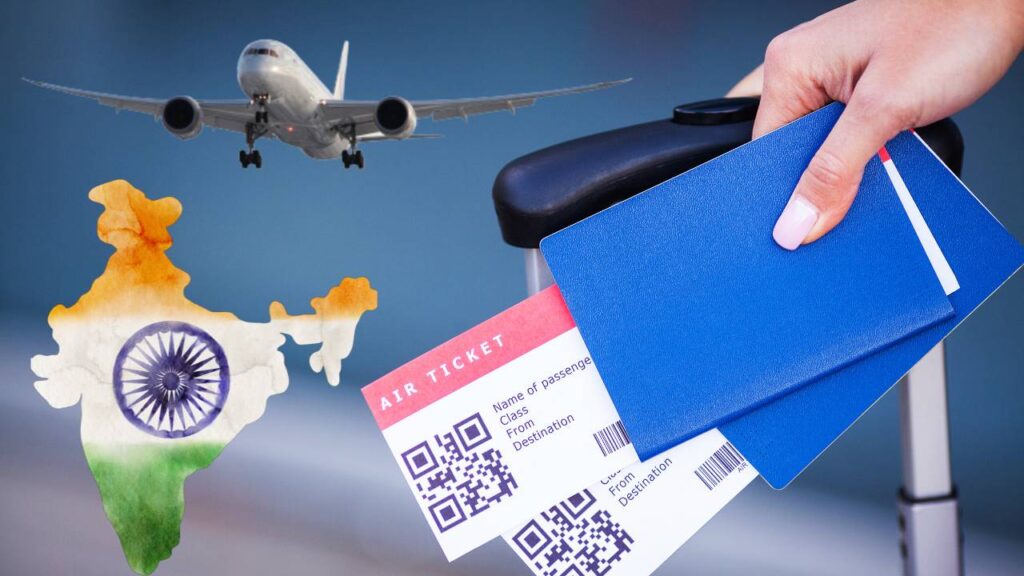As 2025 unfolds with increased international mobility, India remains a top destination for travelers across the globe. Safety and preparedness continue to be essential when planning a visit. The latest update from the U.S. Department of State places India under a Level 2: Exercise Increased Caution advisory. This advisory serves as a warning to travelers to remain alert in certain parts of the country due to region-specific challenges.
Here are the India travel restrictions, safety zones, travel protocols, visa requirements, and all other essential details to help you plan a safe and well-informed trip to India in 2025.
Understanding the U.S. Level 2 Travel Advisory for India
The U.S. government assigns Level 2 advisories to countries where travelers should exercise increased caution due to potential security, political, or health risks. For India in 2025, this classification stems from a mix of regional instability, isolated conflict zones, and occasional civil unrest. While most of India remains peaceful and open to tourists, certain areas demand extra vigilance and updated awareness.
Unlike Level 3 or Level 4 advisories, Level 2 does not prohibit travel but encourages travelers to remain vigilant and avoid high-risk areas. The advisory urges U.S. citizens to stay updated with embassy alerts, register with the Smart Traveler Enrollment Program (STEP), and monitor local news during their stay. Staying informed and maintaining situational awareness will be crucial in ensuring a secure journey throughout the country.
India Travel Restrictions: Key Protocols to Know in 2025
Entry Guidelines for Foreign Travelers
As of mid-2025, India is fully open to international travelers, including those from the United States, Canada, and the United Kingdom. Visitors are expected to comply with certain requirements upon arrival. All travelers must carry a valid tourist or business visa, return or onward travel tickets, and proof of financial support to cover their stay.
The Air Suvidha portal, once mandatory for uploading health and travel declarations, has been suspended unless reactivated during a health emergency. Travelers are still encouraged to check airline and airport announcements regularly for any region-specific travel rules.
Although most COVID-19 restrictions have been lifted, many airports and public places still maintain basic hygiene protocols. It’s advisable to keep vaccination certificates, especially for COVID-19, on hand in case health screenings or spot checks are conducted during transit or upon entering public venues such as hotels, religious sites, or festivals.
U.S. Government Safety Zones: Regions to Avoid in India
While India welcomes tourists across most of its states and cities, the U.S. State Department highlights several areas where travel is strongly discouraged. These regions have either experienced long-standing instability, border disputes, or recurring acts of violence. Below are the primary no-go zones based on 2025 reports:
1. Jammu & Kashmir (excluding Ladakh and Leh)
The Jammu & Kashmir region remains sensitive due to long-standing political and military tensions with Pakistan. Despite some improvement in tourism within Srinagar and surrounding areas, the region still experiences sporadic militant activity, frequent internet blackouts, and military curfews. The U.S. government explicitly advises against any non-essential travel to this zone.
Foreign tourists caught in unrest may experience long delays or may even face restrictions on leaving affected areas due to lockdowns. While the Union Territory of Ladakh, including Leh, is considered safe and tourist-friendly, visitors should not confuse it with Jammu & Kashmir proper, which continues to pose safety concerns in 2025.
2. Border Areas Adjacent to Pakistan
Travelers are also advised to steer clear of the international border between India and Pakistan, apart from the Wagah border crossing used for ceremonial tourism near Amritsar. Areas along the Punjab and Rajasthan borders occasionally witness military operations, landmine risks, and heightened security protocols.
Unauthorized entry or even casual exploration near military zones may lead to detainment or interrogation. These areas are under continuous surveillance, and both governments have issued warnings against civilian movement within these territories.
3. Northeastern States with Active Insurgencies
Although the northeastern part of India is rich in cultural and ecological diversity, certain regions such as Manipur, Nagaland, and parts of Assam have seen ethnic unrest and militant insurgency activities as recently as early 2025. Violent protests, internet shutdowns, and curfews were imposed during ethnic clashes in Manipur earlier this year.
Foreign nationals visiting the Northeast must verify travel permissions and register their presence with local authorities or accommodation providers. Travelers are encouraged to check with tourism departments in each northeastern state before visiting remote districts or tribal areas.
Safe and Welcoming Travel Zones in India (2025)
Despite these warnings, a vast majority of India is completely safe and actively promotes tourism. These regions boast rich culture, heritage, and modern infrastructure that accommodate millions of international visitors each year.
1. Southern India – Kerala, Tamil Nadu, Karnataka, Goa
The southern states are known for their calm political environments, coastal beauty, and spiritual retreats. Places like Munnar, Alleppey, Mahabalipuram, Mysore, and Gokarna are not only safe but also supported by a robust hospitality sector and government-regulated tourism services.
Local law enforcement maintains high visibility in tourist areas, and emergency response infrastructure is comparatively stronger here. Whether you’re attending the Kerala Boat Festival, visiting ancient temples, or relaxing on Goa’s beaches, southern India remains an excellent and secure destination.
2. Western and Central India – Rajasthan, Maharashtra, Gujarat
From the palaces of Jaipur and Udaipur to the bustling city life in Mumbai and Pune, western India is generally peaceful with a consistent flow of international tourists. Gujarat, known for its cultural fairs and wildlife sanctuaries, is also considered very safe and has been investing heavily in tourism infrastructure under the “Dekho Apna Desh” initiative.
Even central Indian cities like Bhopal, Indore, and Nagpur have emerged as business and cultural hubs, offering a blend of safety and modern amenities for foreign visitors.
3. Northern India – Delhi, Agra, Himachal Pradesh, Uttarakhand
The Golden Triangle (Delhi, Agra, and Jaipur) remains India’s most popular tourist route and continues to offer a safe and enriching travel experience in 2025. Additionally, the hill stations of Shimla, Rishikesh, and Mussoorie are not only safe but also heavily patrolled during peak tourist seasons.
Authorities have deployed tourist police, installed multilingual helpdesks, and introduced mobile apps to assist travelers across these areas. As always, petty crimes such as pickpocketing in crowded places should be watched for.
Health Protocols & Medical Safety Guidelines for 2025
Although the threat of COVID-19 has drastically decreased, travelers must remain proactive regarding their personal health and hygiene when visiting India.
Vaccination Guidelines for 2025:
- Standard vaccinations such as Tetanus, Hepatitis A & B, Typhoid, and Rabies are strongly recommended for extended stays or rural visits.
- COVID-19 vaccination certificates, while not mandatory for all, may be required for participation in mass gatherings or religious events.
- Mosquito-borne illnesses like dengue and chikungunya are seasonal concerns in tropical areas. Use of mosquito repellent, wearing covered clothing, and staying in air-conditioned lodgings are advisable.
Medical Infrastructure and Insurance:
Major Indian cities have world-class hospitals and clinics, many of which cater specifically to medical tourists. Rural areas may lack proper healthcare infrastructure. It is crucial to purchase comprehensive travel insurance that covers hospitalization, emergency medical evacuation, and trip cancellations due to health concerns.
Air Travel, Airports, and Connectivity in 2025
India’s aviation sector is booming in 2025, with multiple international and domestic routes connecting even tier-2 cities. Modernized airports now offer digital immigration, biometric screening, and contactless security checks for quicker processing.
Key International Airports:
- Indira Gandhi International Airport (Delhi) – Major hub for North India.
- Chhatrapati Shivaji Maharaj International Airport (Mumbai) – Financial capital’s gateway.
- Kempegowda International Airport (Bangalore) – Tech city with direct U.S. and UK flights.
- Rajiv Gandhi International Airport (Hyderabad) – Leading in medical tourism connectivity.
Airlines such as United, Lufthansa, Emirates, Qatar Airways, and Air India offer increased frequency to and from U.S., Canada, and Europe.
Visa Requirements and Immigration Policy Updates for 2025
In 2025, India continues to simplify international travel by expanding its e-Visa system, making it one of the most convenient entry options for foreign tourists. The Government of India now offers e-Visa eligibility to over 170 countries, streamlining the process and reducing paperwork for travelers from the U.S., UK, Canada, and beyond.
Types of e-Visas Available in 2025:
1. Tourist Visa:
Travelers can choose from three options based on the duration of their stay—30 days, 1 year, or 5 years. These visas allow multiple entries, making them ideal for both short vacations and frequent visits.
2. Business Visa:
Professionals visiting India for trade meetings, exhibitions, or business discussions can apply for the business e-Visa. It permits multiple entries and supports short- to medium-term business-related travel.
3. Medical Visa:
Individuals seeking specialized medical treatment in India can apply for a medical e-Visa. This category also allows one or two attendants to accompany the patient under the same application process.
To ensure a smooth entry, travelers must apply through the official Indian e-Visa portal at least 7 to 10 days before their intended departure. Authorities recommend completing the form accurately and uploading the required documents, such as a valid passport and a recent photograph.
Upon approval, travelers receive the e-Visa electronically. They should print a hard copy and carry a digital copy for immigration checks at the airport. Immigration officers may request both versions, so it’s best to keep them easily accessible.
India also uses biometric scanning and e-gates at major international airports, speeding up the entry process for e-Visa holders. Always verify the visa details and travel validity period before boarding your flight to avoid delays or denials at immigration.
By modernizing its visa process, India aims to boost tourism, support business travelers, and promote medical tourism—all while ensuring security and efficiency at its borders.
FAQs
1. Is India open for international tourism in 2025?
Yes, India is fully open to international travelers in 2025. Tourists, business travelers, and medical visitors can enter the country with a valid visa. Travelers must stay informed about India travel restrictions in specific regions such as Jammu & Kashmir and parts of the Northeast, where safety advisories still apply.
2. What is the current U.S. travel advisory level for India?
As of 2025, the U.S. Department of State has issued a Level 2 advisory for India. This means travelers should exercise increased caution due to potential civil unrest, terrorism in certain areas, and localized conflicts. It does not prohibit travel but encourages awareness and avoidance of high-risk zones.
3. Are there any regions in India that I should avoid?
Yes. The U.S. government advises travelers to avoid:
- Jammu & Kashmir (excluding Ladakh and Leh) due to security threats.
- India-Pakistan border areas, except for the Wagah border crossing.
- Conflict-affected parts of Manipur, Nagaland, and Assam in Northeast India.
These regions may experience insurgent activity, protests, or restricted movement zones.
4. Do I need to be vaccinated to enter India in 2025?
While COVID-19 vaccination is no longer mandatory, it is strongly recommended. Travelers should also be up to date on routine vaccinations (like MMR, DPT), and consider vaccines for Hepatitis A, B, Typhoid, Rabies, and Japanese Encephalitis, especially if visiting rural areas or during monsoon seasons.
5. Is COVID-19 testing required before or upon arrival in India?
No, as of 2025, COVID-19 testing is not required for entry into India for most travelers. Authorities recommend carrying a vaccination certificate and monitoring local airport announcements in case protocols change in response to global health updates.
6. What are the current visa requirements for entering India?
India offers a streamlined e-Visa system for over 170 countries. Travelers can apply for Tourist, Business, or Medical e-Visas online at least 7–10 days before their trip. Upon approval, visitors must carry both digital and printed copies of the e-Visa for presentation at immigration checkpoints.
7. Are airports and airlines operating normally in India?
Yes, all major Indian international airports are fully operational in 2025, including those in Delhi, Mumbai, Bangalore, and Hyderabad. Major international airlines, including Air India, Emirates, Qatar Airways, and United Airlines, continue to offer direct and connecting flights to India.
8. Is it safe to use public transport in India right now?
Public transportation is running normally across most Indian cities. Travelers are advised to use registered taxis, ride-hailing apps (like Uber or Ola), or hotel-arranged transport for safety and convenience. In sensitive areas, local movement may be restricted or monitored, so always check local advisories.
9. What kind of travel insurance is recommended for India?
Travelers should purchase comprehensive international travel insurance that includes:
- Emergency medical treatment
- COVID-19 coverage
- Trip cancellation and delay coverage
- Medical evacuation (especially for remote or high-risk regions)
This is essential, especially in areas where medical infrastructure may be limited.
10. How can I stay informed about India travel restrictions while I’m in the country?
U.S., UK, and Canadian citizens should enroll in their respective embassy’s travel alert services, such as the U.S. Smart Traveler Enrollment Program (STEP). Additionally, monitor local news, install regional weather and emergency alert apps, and follow official tourism boards for real-time updates on travel disruptions, protests, or health advisories.






